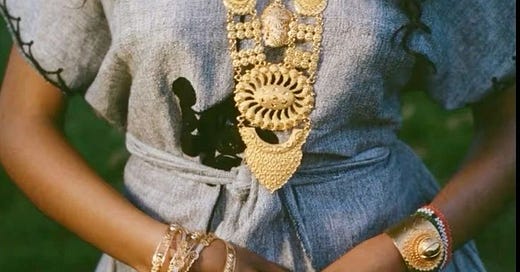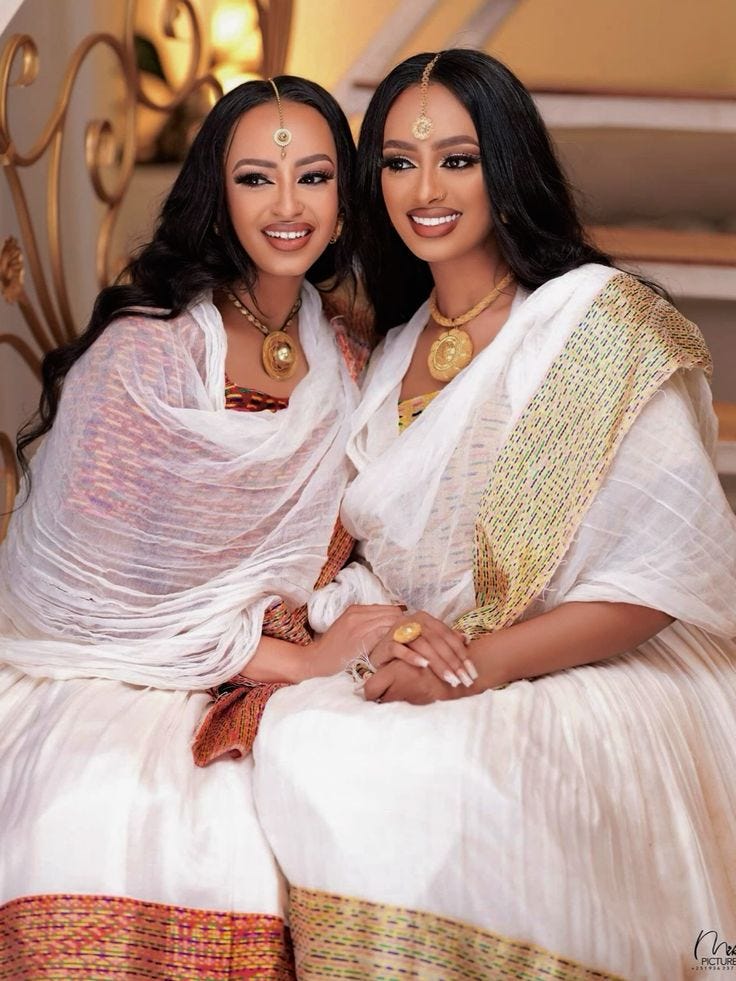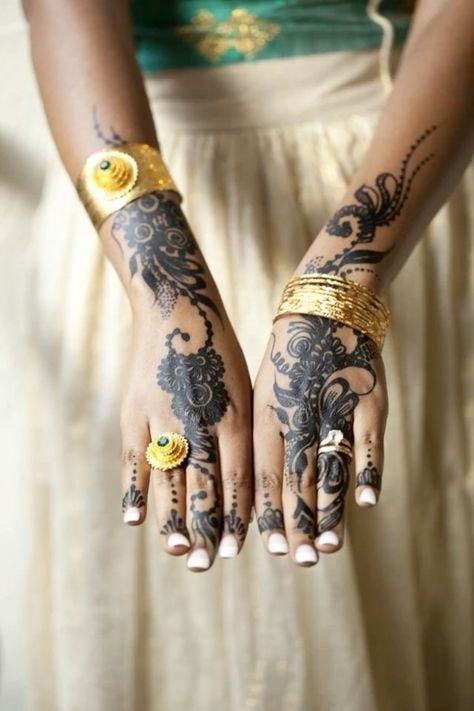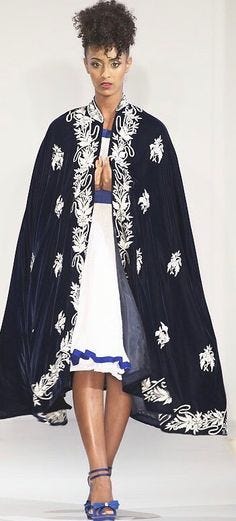Welcome to Issue #17 of the African Fashion File newsletter. We are still passing through the incredible East Africa region, with its dramatic landscape and beautiful countries. Today we are in Eritrea to explore the country's ancient history, colorful culture, and breathtaking fashion.
The State of Eritrea is a country in the Horn of Africa region of Eastern Africa. It is bordered by Ethiopia in the south, Sudan to the west, and Djibouti to the southeast. It is also geopolitically positioned with an extensive coastline along the Red Sea. Eritrea derives its name from the Greek word for the Red Sea.
Eritrea is regarded as one of the oldest nations in the world, with evidence of human remains in the area dating one million years. Its strategic location, historically made it a vital trade route and encouraged exchanges that shaped its cultural identity. As a hotspot for trade, Eritrea's culture melds African, Middle Eastern, and Mediterranean influences. Exposure to these different cultures inspires Eritrea’s layered culture and fashion style.
Due to its history with Ethiopia, Eritrean culture also shares certain aspects of Ethiopian culture. For instance, the Habesha Kemis is the traditional clothing of Eritrean and Ethiopian women. It is an ankle-length, chiffon-made, snow-white dress usually worn at formal events, such as traditional weddings. The unique style of hand embroidery and handwoven patterns on their dresses differentiates Eritrean-style dresses from Ethiopian styles.
Modern-day Eritrea is also a multiethnic country with nine distinct ethnic groups. These groups are religious and modest. They wear impressive clothes and adorn themselves with a rich repertoire of body arts, including jewelry and hairdressing.
Women from Tigrinya and other tribes in Eritrea wear the Zuria, which is a gauze hooded dress garment often worn in various styles and patterns by Eritrean women. Traditional Zuria carries distinct embroidery and bright colors such as red, green, and yellow, representing cultural pride and symbolism.
Women often accessorize the Zuria with gold or silver jewelry, such as Guangua necklaces and Tesmi earrings, and traditional hairstyles like Albaso, a style with seven braids. This shows that accessorizing is integral to Eritrean fashion. Hairstyles, jewelry, Henna and other adornments are highly symbolic as they signify age, marital status, or ethnic background.
Fashion for men in Eritrea typically includes the Jalabiya, a flowing tunic introduced by Arab influence. Complementing this is the Kuta shawl, a handwoven two-layered shawl used by Eritrean and Ethiopian men to cover their heads and shoulders, especially during religious activities. The equivalent of this shawl worn by women is the Netela.
Men in Eritrea are also known for wearing tailored jackets and trousers in neutral tones, a subtle influence of Italian colonial rule. These suits are known as Eritrean suits, a traditional formal wear consisting of a long sleeve, knee-length shirt, and matching pants. It is made with sheer silk and a kuta, netela or gabi is wrapped around the suit. They are often favored during special occasions including weddings and church services.
Fashion shows have always been a way of introducing new designs in fashion to the world. It has also become a successful tool in introducing diverse cultures of the world to a global audience. Eritrean contemporary designers support this by showcasing ingenious and original designs at fashion shows that contribute to the Eritrean story and identity.
Modern Eritrean designers bring pride to their country through their creations which mainly feature bold Eritrean patterns, fabrics, and aesthetics. Traditional clothes are displayed during cultural events like Eritrean Independence Day and festivals like Tuka-Satta to showcase the richness of Eritrean attire.
In reinterpreting traditional garments into modern fashion and global trends, contemporary Eritrean designers are highlighting Eritrean pride in their culture and sharing with the world the national identity that is Eritrean. Designers like Farida Deglel, for instance, have introduced a wide variety of Eritrean cultural dresses on international red carpets.
It is important to highlight that Eritrea’s fashion is not just clothing—it is a statement of identity, resilience, and pride. From traditional textiles to modern reinterpretations, Eritrea continues to inspire and captivate.
We hope this trip ushered you into Eritrea’s resilience and cultural pride in the world of fashion. We look forward to touring with you as we visit other African countries. To enjoy more details on Eritrea and other African countries, follow our posts on Instagram @thefashionedmuseum.
See you in the next issue!
- The Fashioned Museum Team









